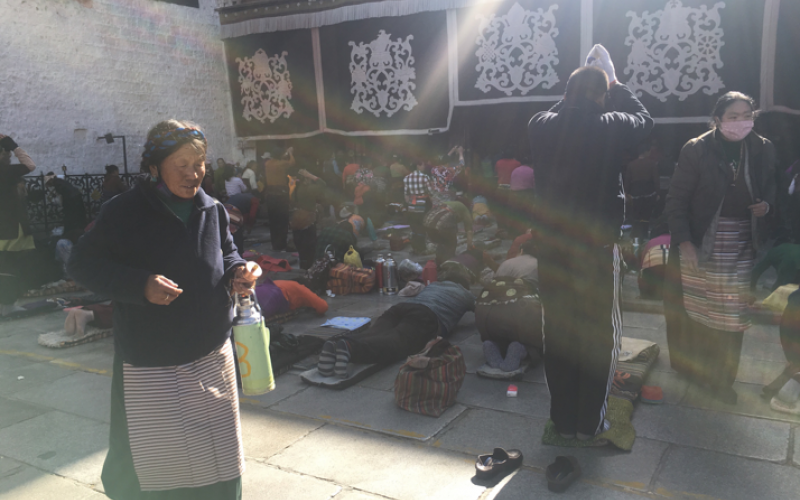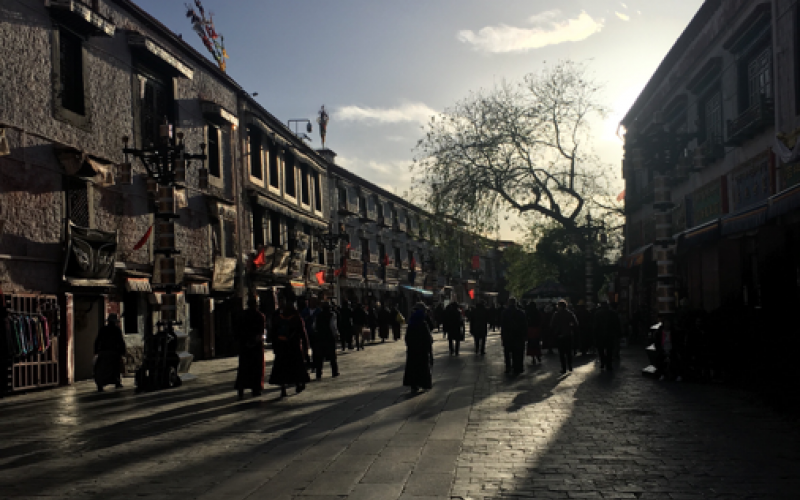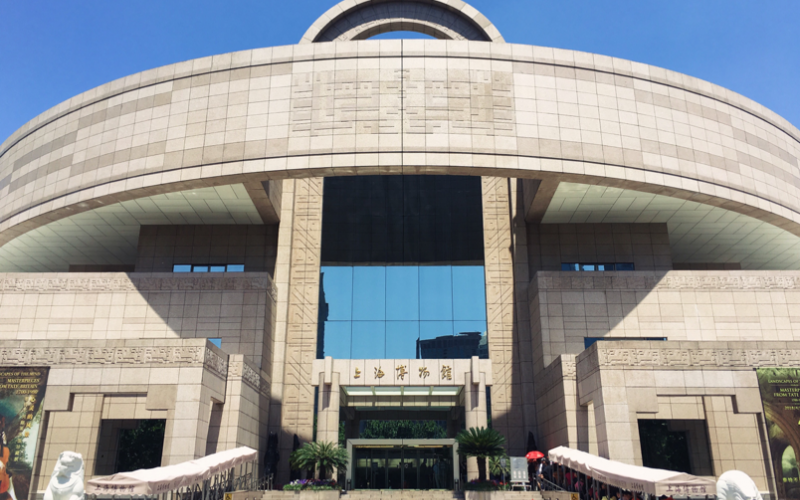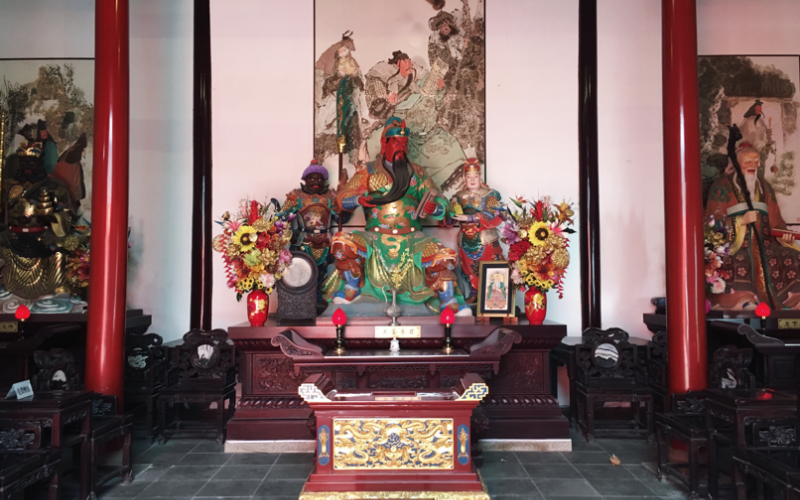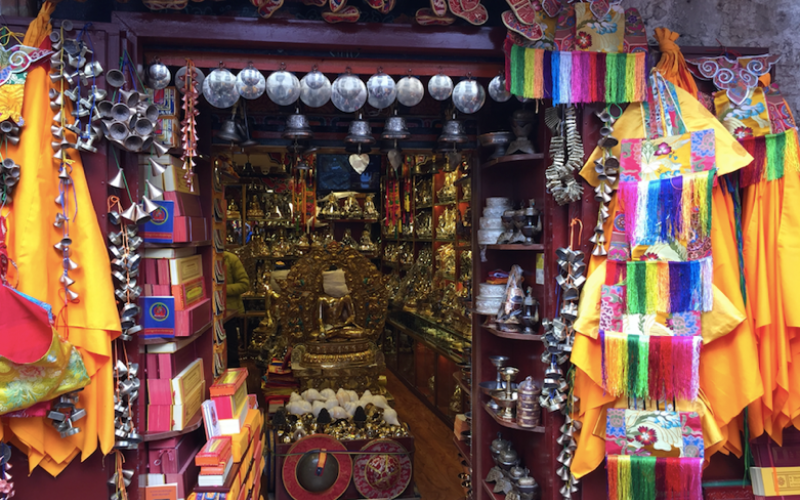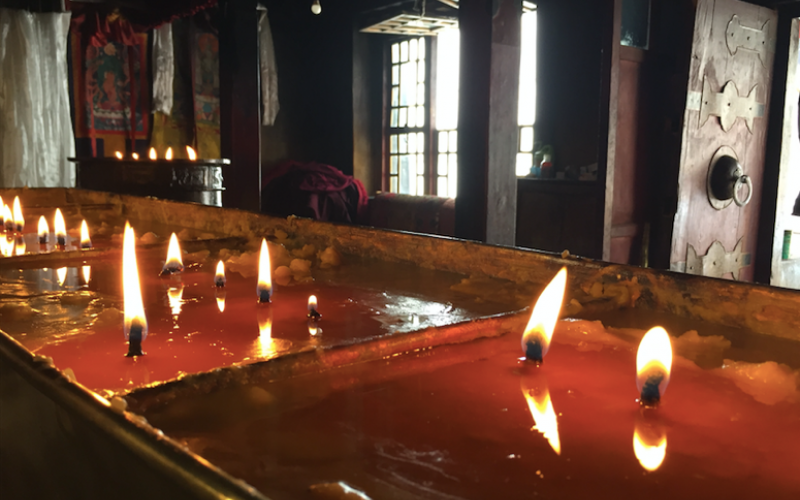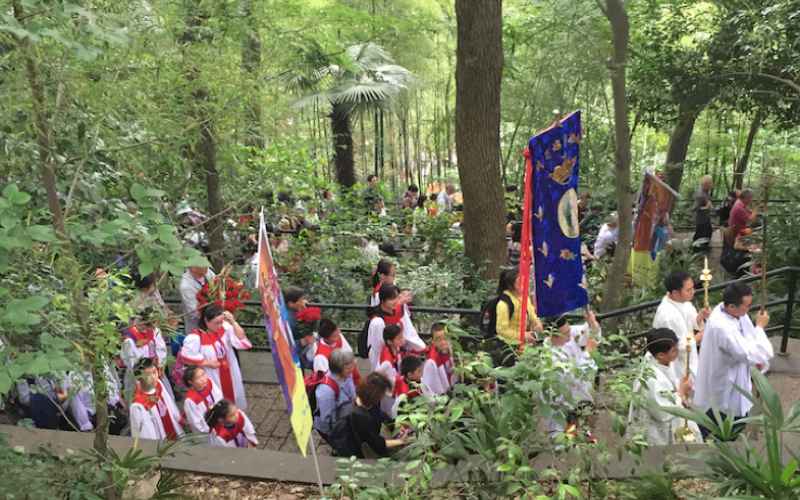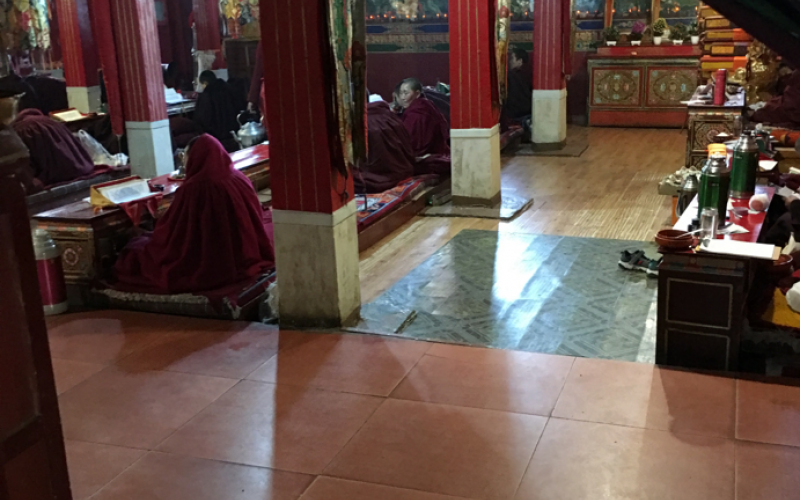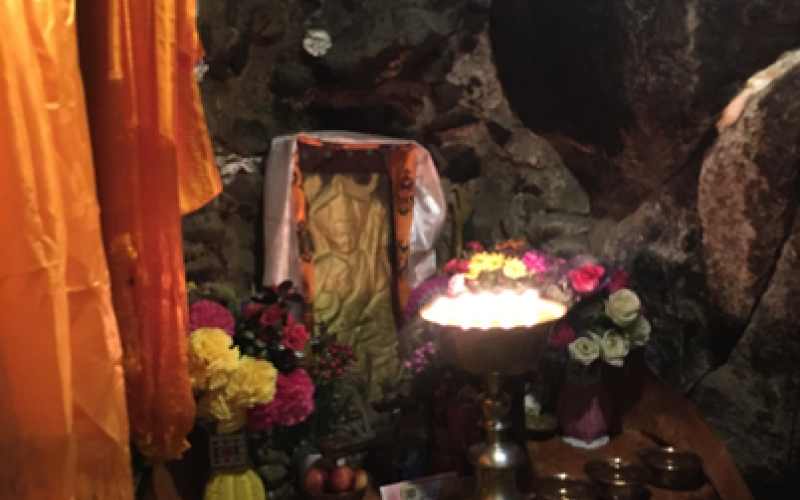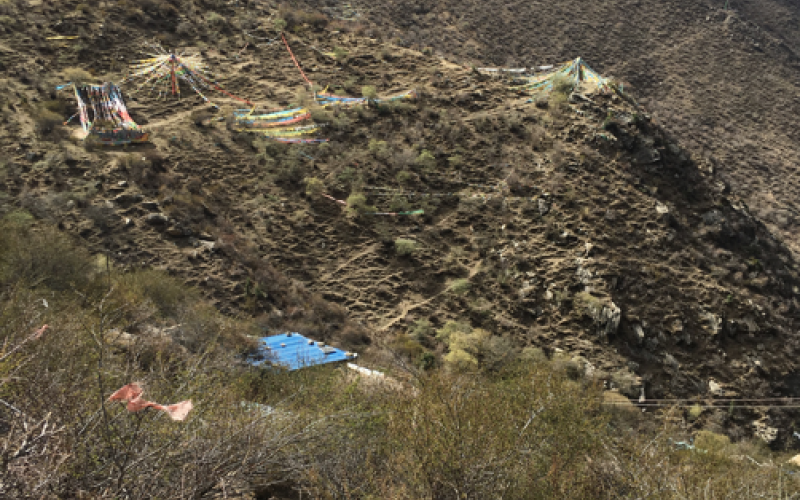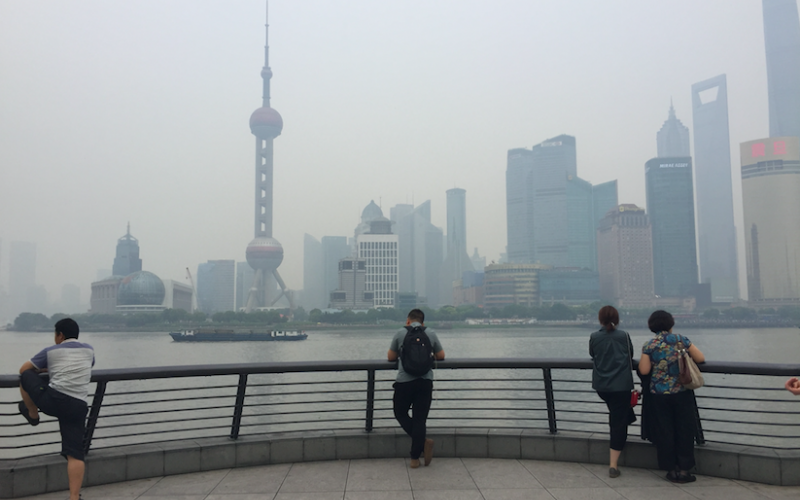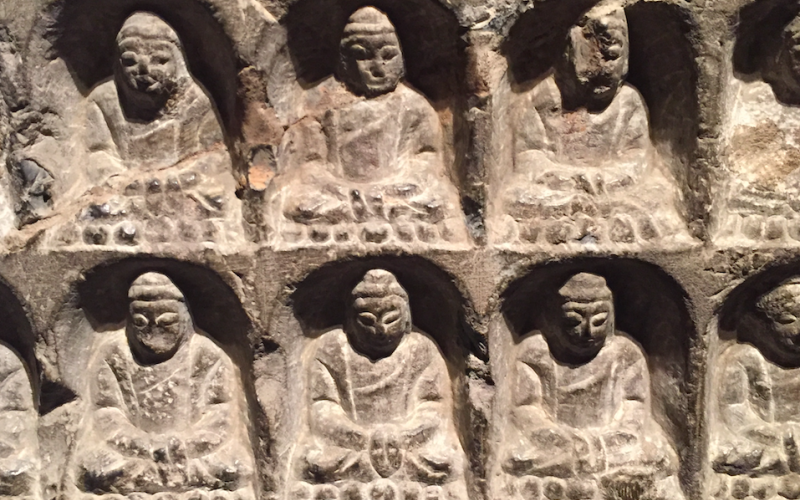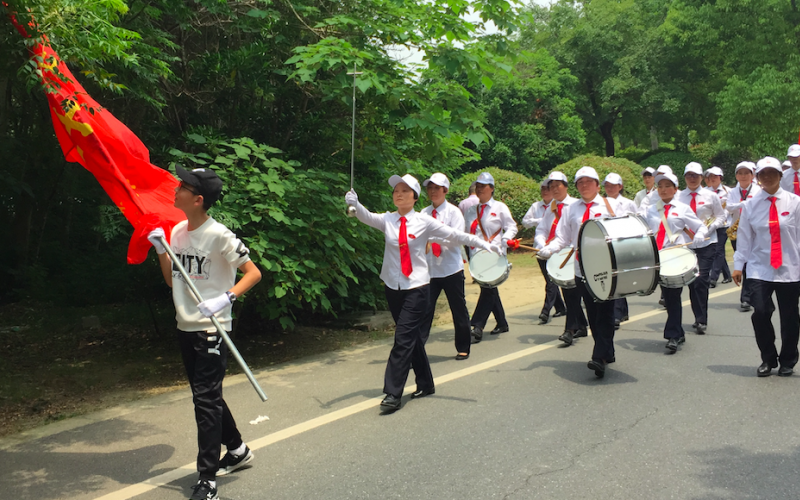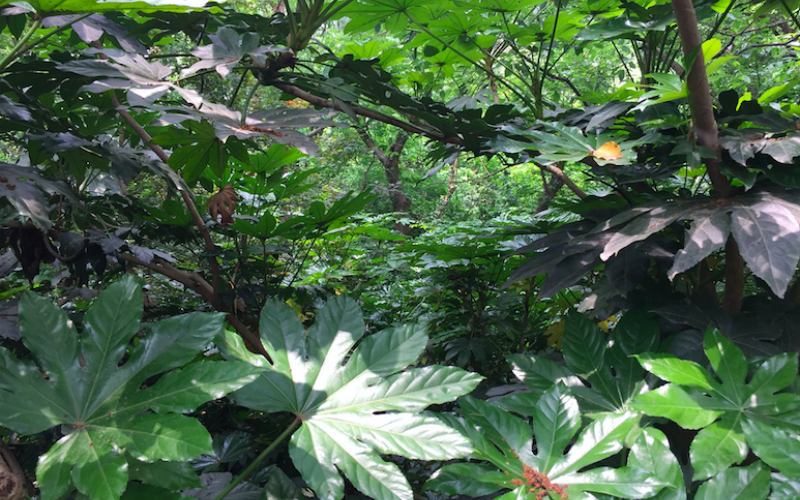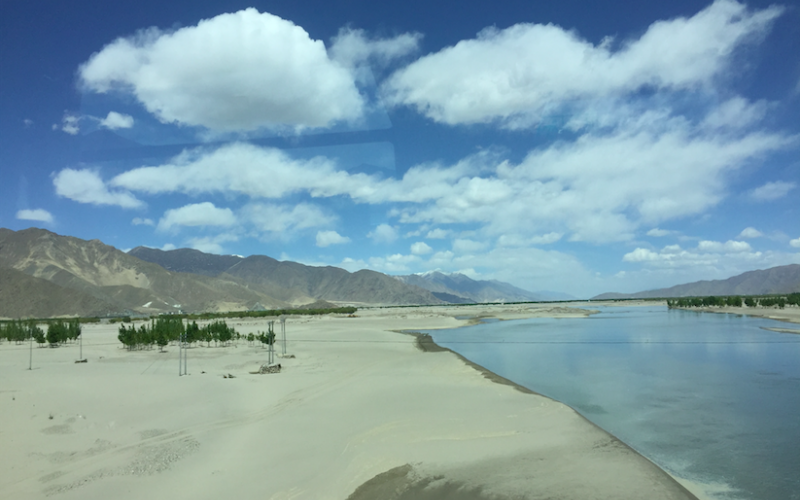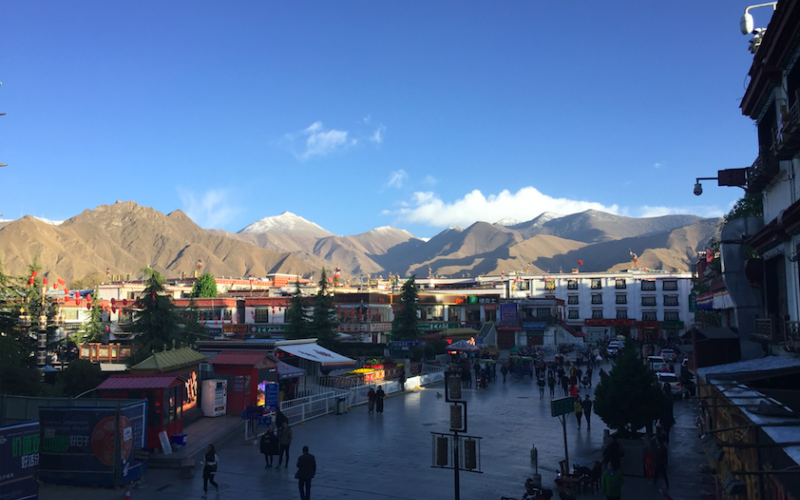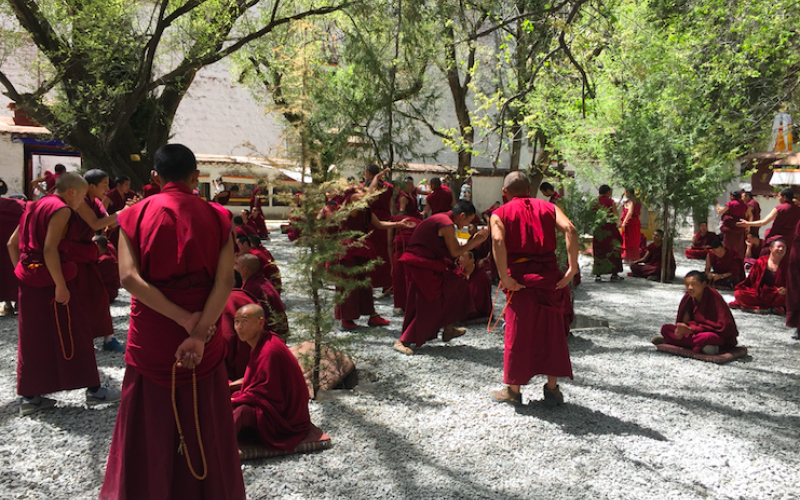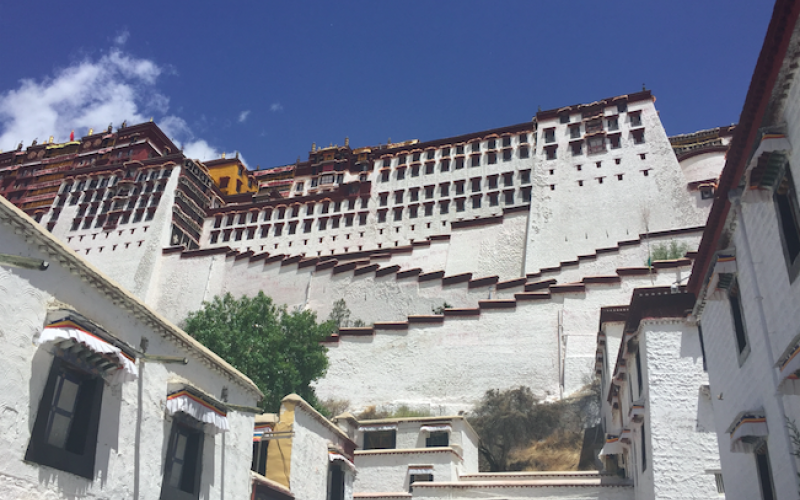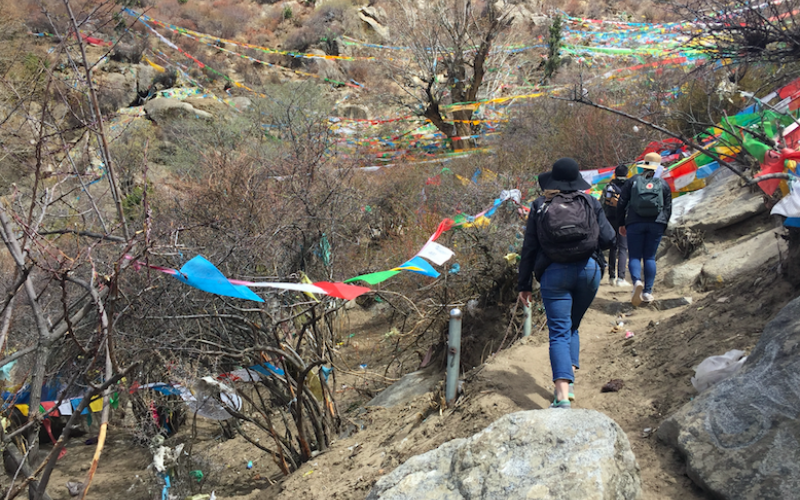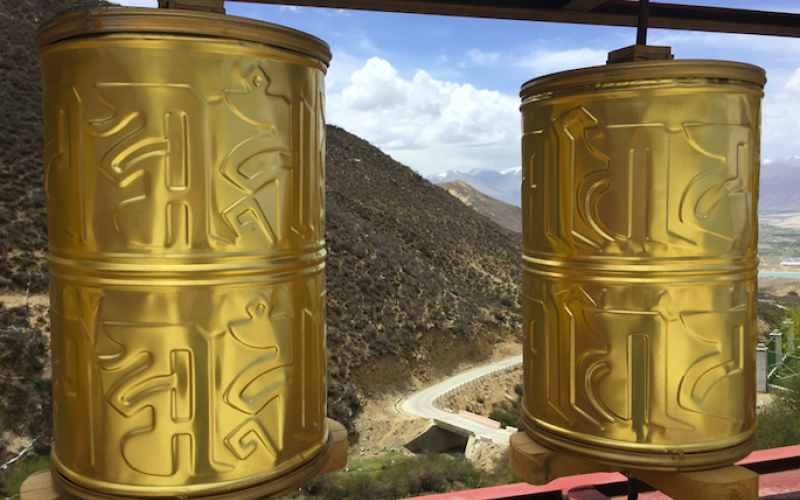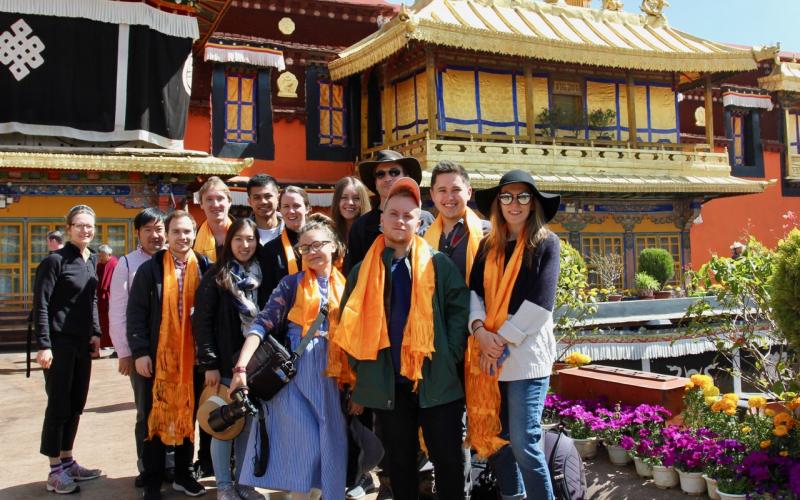Ed. Note:
We continue our series of student reflections on the ISM-sponsored travel seminars with a trip to China. During the spring semester students in the course “Religious Pilgrimage in China,” co-taught by Profs. Andrew Quintman (Religious Studies) and Chloe Starr (Divinity), had the opportunity to travel to Shanghai and Lhasa. The course explored Tibetan Buddhist and Chinese Catholic ritual practices surrounding religious pilgrimage; the students were able to witness some of these first-hand. Students from the disciplines of history, religious studies, ecology and religion, and divinity offer their observations below.
These reflections were compiled and edited by ISM student Anna Thurston M.A.R. ’19 (religion and visual arts).
Reflection #1: History
Reflection #2: Religious Studies
Reflection #3: Ecology and Religion
Reflection #4: Divinity
Postcards from China
Reflection #1: History
Anna Lu
Undergraduate Student, History
As we traveled to Chinese sacred sites, I was struck by the idiosyncrasy of our experience. It is rare on a trip to China to be so immersed in the spiritual lives of local residents. It was even more thrilling to see religious practices that occur only occasionally – the Marian devotion through pilgrimage during her month of May to the Our Lady of China Basilica in Sheshan on the outskirts of Shanghai, and the numerous pilgrims at the Barkhor during the holy month of Saga Dawa in Lhasa.
As an undergraduate student at Yale, I’ve studied both Chinese history and contemporary society; therefore, to me these experiences spoke meaningfully to the complex and evolving relationship between the Chinese state and religious practice. Despite the enormous differences between life as a middle-class Shanghai Catholic and life as a Tibetan nomad visiting Lhasa, I was heartened by their shared ability to continue practicing their historically-rich faiths, notwithstanding contemporary constraints.
Much ink has been spilled on the “Spiritual Void” (精神空虚) to be filled in contemporary Chinese society, so to witness so intimately both the revival and the perseverance of religious belief in Shanghai and Tibet felt especially rare and wonderful.
Reflection #2: Religious Studies
Anonymous Ph.D. Student, Religious Studies (Asian Religions)
I have spent the majority of my (admittedly short) academic career studying the religious traditions of China, focusing primarily on Buddhism and Daoism. Despite my studies, however, I had never before been to the Chinese mainland. This trip, then, was particularly exciting for me. Though there were innumerable points during our travels that led me to reflect on what I have learned in the classroom, our first proper day in Shanghai had an especially striking effect.
On that first day, we toured the city. Among our stops were, appropriately, various sites of worship. The first of these was a Daoist temple called Dajing Pavilion (大境閣), which houses a museum of Daoist calligraphic writing and a portion of the old wall of Shanghai. While there, we were able to witness a practitioner performing Daoist breathing techniques before statues of three Daoist deities: Lord Zhao the Marshal (趙公元帥), associated with wealth; Sagacious Lord Guan (關聖帝君), a god of war; and the Old Man Below the Moon (月下老人), associated with matchmaking. Though I have read about such breathing techniques, I had never before borne witness to them, and doing so has added to the practice a sense of reality that I had been unable to glean through readings alone.
Our final stop on the tour, the Shanghai Museum (上海博物館), is, perhaps, a less obvious site of worship, though—in my opinion—it remains one nonetheless. The Shanghai Museum houses a number of artifacts from Chinese history (including a gallery of religious—primarily Buddhist and Daoist—statuary in which I spent the bulk of my time), and, as with museums everywhere, it serves as a means of crafting narrative. Here, visitors from Shanghai, wider China, and the world at large are able to venerate a carefully curated idea of China’s past. While walking through the museum and its galleries, I was conscious of the ways in which our work as scholars feeds into or argues against such narratives. I began to consider how (or whether) our work affects the people who receive these narratives, and what our responsibility is toward them. Though I have no answers for that quandary, I am grateful for the opportunity that led me to consider it.
Reflection #3: Ecology and Religion
Anna Thurston
Joint Degree Master’s Student, Environmental Management, Religion and Visual Arts
In my attempt to digest what I learned during this on-site study in China, I find myself returning to the somatic, or embodied, particularities of my experience. For example, on the outskirts of Shanghai, we traveled to a Marian shrine that is said to bear the trappings of Chinese Catholic devotion: Sheshan Basilica. When we began our ascent of the hill that leads to the shrine, I immediately noticed the perfume from the lush vegetation surrounding us. However, as we continued our way up the winding mountain path through the thick scent of Shanghai’s humid springtime, we quickly found our journey barricaded by regulatory ropes as police made way for practicing Chinese Catholic pilgrims. Unable to walk the remainder of the path ourselves, we watched from above as the procession inched its way up the mountain, passed where we stood, and continued on to the final destination. As they inched their way upward, the ritual incense the pilgrims carried wafted to where we stood and mixed with the air around us. What began as a visual moment of white robes against a canvas of green leaves found itself magnified by the simultaneous perfumes of variegated local species and imported incense carried by pilgrims from afar. This mix of sweet natural and savory aromatics, along with the vivid imagery of the white vestments and green vegetation, seemed to embody—if only for a handful of richly-visceral moments—the complex historical relationship between old Shanghai and the New as it continues to negotiate with what it means to both a Catholic believer and a Chinese citizen. Prior to visiting this site, I most often associated the use of ritual incense with interior spaces. Yet, this outdoor blend of the burning scents with the blooming flora lent further significance to the pilgrims who, for varied reasons, choose to worship outside of the walls of the basilica. After witnessing how personal devotion manifested itself in Sheshan’s ritual activity, I left with an expanded understanding of how the surrounding landscape and scents of religious sites can function as an extension of interior sacred space.
While the Shanghai destination can be described in terms of its humidity and lush vegetation, Lhasa’s climate and geography could not be more different: the Tibetan Plateau, with its dry air, high elevation, and cool weather, and framed by soaring mountains, quickened our heart rate—and our senses. Here, too, was the incense, but the incense vapors from Lhasa’s sacred sites mixed with a key ritual material brought by Tibetan Buddhist pilgrims: butter. What struck me—accustomed to taking butter for granted as a universally common foodstuff—was the ubiquity and importance of yak butter in this region’s religious practices. Butter was everywhere! Pilgrims either carried large thermoses of melted yak butter for pouring, or they carted around a tub of its solid counterpart and dolloped it as offerings. Whether it was in the Potala Palace or in meditation caves carved into the crags of a mountain, its scent signified an encounter with an auspicious moment. While I don’t think I’ll carry on the Tibetan tradition of mixing liquid butter with tea, I will forever remember how this humble food found itself transformed into a vehicle of light as it illuminated the golden luster of the Buddha and the pathways of pilgrims. I left Lhasa with a renewed reverence for the transformative power of ritual.
While feeling more hope and inspiration in my professional pursuits as a result of this travel seminar, I was completely caught off guard when, during our flight back to New York City, I looked down at my in-flight meal and my heart stopped at the sight of butter. There, several miles in the air and traveling thousands of miles at high speed, time stood still as I realized what it now symbolized. Recalling the vivid smells of those Tibetan Buddhist spaces now functions as my olfactory souvenir, reminding me of the promise of religious ritual to facilitate connection with the land through transformed common ingredients and blended sensory experiences.
Reflection #4: Divinity
Mary Beth Mills-Curran
Master of Divinity Candidate, Yale Divinity School, Berkeley Episcopal Seminary
The hike up to the Chimpu in the mountains north of Samye Monastery, a two-hour drive from Lhasa, might have been an ordinary one if it didn’t begin above 13,000 feet. Nestled into the side of the mountain, Chimpu comprises a network of retreat centers for solitary meditation and practice. It is centered around the meditation cave of Guru Rinpoche,the founder of Tibet’s first monastery at Samye in the eighth century.
After two days of seeing the highly regulated religious sites like the Jokhang and the Potala Palace, it was a change to visit Chimpu and the tiny nunnery at the base of the mountain. As we hiked up to the spot where Guru Rinpoche is said to have meditated I could climb for no more than five minutes before having to stop and wait for my heartbeat to return to normal. The thin air of the high-elevation made walking up a hill feel like sprint. Passing a number of elderly Buddhist nuns, who climbed the mountain with apparent ease, it was humbling to recognize the ways my body was not adapted to that environment. I was completely out of breath when we paused to collect our group near our final push: the circumambulation of the holy site. We sat in the shade by a group of younger men who seemed like pilgrims to the site. They seemed to be preparing for the ritual circumambulation as well. They greeted us warmly and departed as we were still resting.
The Guru’s cave was just past a small outcropping of rocks, and as we made the final walk around it, we saw the young men a bit ahead of us, having bypassed the site itself. They were speaking to a group of nuns, dressed in their maroon and marigold robes. I didn’t immediately recognize what was happening, but another member of our group explained: “They must actually be police, since they are asking them for the identification and registration papers.” It was a starting realization that, even in this remote place, religious communities were under the close observation of the government.
Seeing the elderly nuns under that kind of scrutiny was uncomfortable, and it made me reflect on the history of religious practice in China over the past hundred years. What had the people here at Samye seen? What kind of dedication did it take to keep these practices alive during periods like the Cultural Revolution? As I prepare for ministry myself, hoping to be ordained a priest in the Episcopal Church, it caused me to reflect on my own dedication to my call. How would I respond faced with challenges or opposition by my government? What kind of incredible women must they be?
Sometime later, as we returned to the base of the mountain, we were greeted by the sound of chanting coming from the main nunnery. Sixty nuns had gathered together to practice on the first day of the Tibetan holy month, Saga Dawa. Two large horns, each more than ten feet long, blared. A number of smaller horns and drums also sounded, and the nuns chanted together. It was the first time we had seen a community actually able to practice together in an organized way since arriving in Tibet.
Witnessing the living practice of this group, I saw something familiar—a group of people whose lives were made extraordinary not because of some magical strength they possessed as individuals, but because those lives were organized around community and prayer.
Postcards from China
